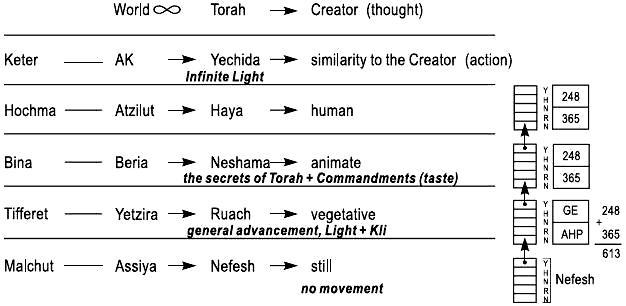Introduction To The Study Of The Ten Sefirot Pdf Writer
But God reveals Himself to mankind through a series of ten emanations, sefirot, a configuration of forces that issue from the. As a rule, mekubbalim (people who actively study and practice kabbalah) are skeptical of men like Scholem. Crack Corel X5 Remove Protexis Spyware here. The ten Sefirot are generally divided into two categories: Intellect (sechel) and Emotions. Oct 24, 2012. Answer: In order to understand what The Study of the Ten Sefirot is about, I have to feel these phenomena inside me. They don't take place. Thus I divide all of reality into myself and to the source that created me, that designed me, and that influences me, which means the Creator. In me there is a desire to.


Representation of the with the 10 in each, as successively smaller concentric circles, derived from the light of the Kav after the Suspicions aroused by the facts that the Zohar was discovered by one person, and that it refers to historical events of the post- period while purporting to be from an earlier time, caused the authorship to be questioned from the outset. Joseph Jacobs and Isaac Broyde, in their article on the Zohar for the 1906, cite a story involving the Kabbalist, who is supposed to have heard directly from the widow of de Leon that her husband proclaimed authorship by Shimon bar Yochai for profit: A story tells that after the death of Moses de Leon, a rich man of Avila named Joseph offered Moses' widow (who had been left without any means of supporting herself) a large sum of money for the original from which her husband had made the copy. She confessed that her husband himself was the author of the work.
She had asked him several times, she said, why he had chosen to credit his own teachings to another, and he had always answered that doctrines put into the mouth of the miracle-working Shimon bar Yochai would be a rich source of profit. The story indicates that shortly after its appearance the work was believed by some to have been written by Moses de Leon. However, Isaac evidently ignored [ ] the woman's alleged confession in favor of the testimony of Joseph ben Todros and of Jacob, a pupil of, both of whom assured him on oath that the work was not written by de Leon.
Issac's testimony, which appeared in the first edition (1566) of Sefer Yuchasin, was censored from the second edition (1580) and remained absent from all editions thereafter until its restoration nearly 300 years later in the 1857 edition. Rabbi Aryeh Kaplan notes that Isaac evidently did not believe her, since Isaac quotes the Zohar as authored by Rabbi Shimon bar Yohai in a manuscript in Rabbi Kaplan's possession. This leads him to hypothesize that 's wife sold the original manuscript, as parchment was very valuable, and was embarrassed by the realization of its high ancient worth, leading her to claim it was written by her husband. Rabbi Kaplan concludes saying this was the probable series of events.
The Zohar spread among the Jews with remarkable swiftness. Scarcely fifty years had passed since its appearance in Spain before it was quoted by many, including the mystical writer and. Certain Jewish communities, however, such as the, (Western Sefardic or ), and some Italian communities, never accepted it as authentic. Late Middle Ages [ ] By the 15th century, its authority in the Spanish Jewish community was such that drew from it arguments in his attacks against, and even representatives of non-mystical Jewish thought began to assert its sacredness and invoke its authority in the decision of some ritual questions. In Jacobs' and Broyde's view, they were attracted by its of man, its doctrine of, and its ethical principles, which they saw as more in keeping with the spirit of than are those taught by the philosophers, and which was held in contrast to the view of Maimonides and his followers, who regarded man as a fragment of the universe whose immortality is dependent upon the degree of development of his active intellect. The Zohar instead declared Man to be the lord of the, whose immortality is solely dependent upon his morality. Conversely, (c.1458 – c.1493), in his Bechinat ha-Dat endeavored to show that the Zohar could not be attributed to Shimon bar Yochai, by a number of arguments.
Main article: Tikunei haZohar, which was printed as separate book, includes seventy commentaries called ' Tikunim' (lit. Repairs) and an additional eleven Tikkunim. In some editions Tikunim are printed that were already printed in the Zohar Chadash, which in their content and style also pertain to Tikunei haZohar. Each of the seventy Tikunim of Tikunei haZohar begins by explaining the word ' Bereishit' (בראשית), and continues by explaining other verses, mainly in parashat Bereishit, and also from the rest of. And all this is in the way of, in commentaries that reveal the hidden and mystical aspects of the Torah.